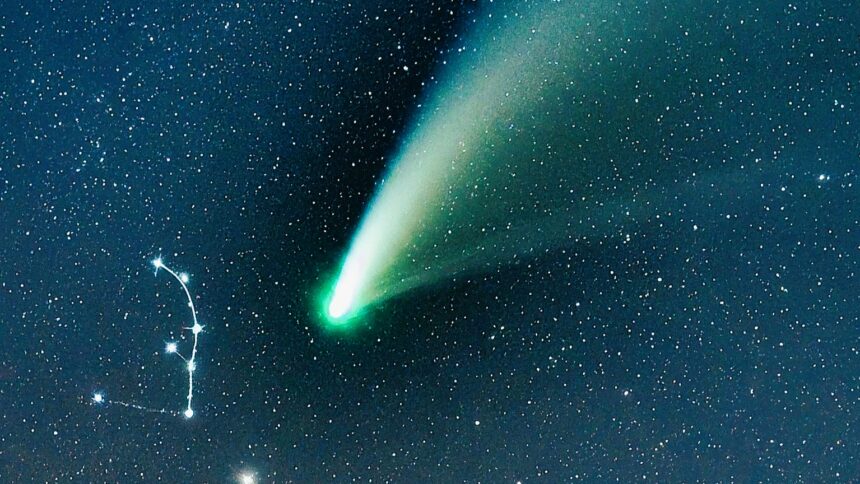A celestial spectacle is unfolding in our night skies as the colossal comet 12P/Pons-Brooks graces the inner solar system. This icy wanderer, boasting a nucleus estimated to be wider than Mount Everest, belongs to the family of Halley-type comets, completing an orbit around the sun roughly every 71 years. With its closest approach to the sun (perihelion) on April 21st, 2024, skywatchers may soon witness this comet with the naked eye.
The History and Nature of 12P/Pons-Brooks
Officially documented sightings of 12P/Pons-Brooks date back to 1812 by French astronomer Jean-Louis Pons, with a subsequent independent rediscovery by British-American astronomer William Robert Brooks in 1883 [Source: Wikipedia – 12P/Pons-Brooks]. Historical records suggest possible observations of this comet even earlier, dating back centuries.
Comet 12P/Pons-Brooks is a remarkable cryovolcanic comet. As it ventures closer to the sun, internal pressures build, causing spectacular eruptions of dust, gas, and ice. One such outburst in 2023 [Source: Space.com] dramatically increased the comet’s brightness and created a temporary ‘horned’ appearance, earning it the moniker “Devil Comet.”
Tips for Observing the Mega-Comet
While already detectable with telescopes, 12P/Pons-Brooks is predicted to brighten further in the coming weeks. Here’s how to maximize your chances of spotting this celestial visitor:
- Timing Matters: Late March and early April 2024 offer the best viewing opportunities. On March 31st, the comet will pass near the bright star Hamal in the constellation Aries, making it easier to locate [Source: EarthSky].
- Dark Skies are Key: Escape city lights and find a location with minimal light pollution and a clear view of the western horizon.
- Gear Up: Binoculars or a small telescope will significantly enhance your comet-watching experience. Stargazing apps like Stellarium [stellarium.org] or SkySafari will guide you to the comet’s precise location.
The Science Behind the Spectacle
Comets like 12P/Pons-Brooks are fascinating relics from the early days of our solar system. By studying them, scientists gain valuable insights into the composition and conditions present during the solar system’s formation [Source: NASA Solar System Exploration]. Observing this rare comet is a chance to connect with the cosmic wonders and the dynamic history of our solar system.
A Celestial Show Not to Be Missed
Whether you’re a seasoned stargazer or simply fascinated by the night sky, the appearance of 12P/Pons-Brooks is a unique opportunity to witness a piece of cosmic history. Don’t miss your chance to see this mega-comet before it fades back into the depths of space, not to return for another seven decades.










